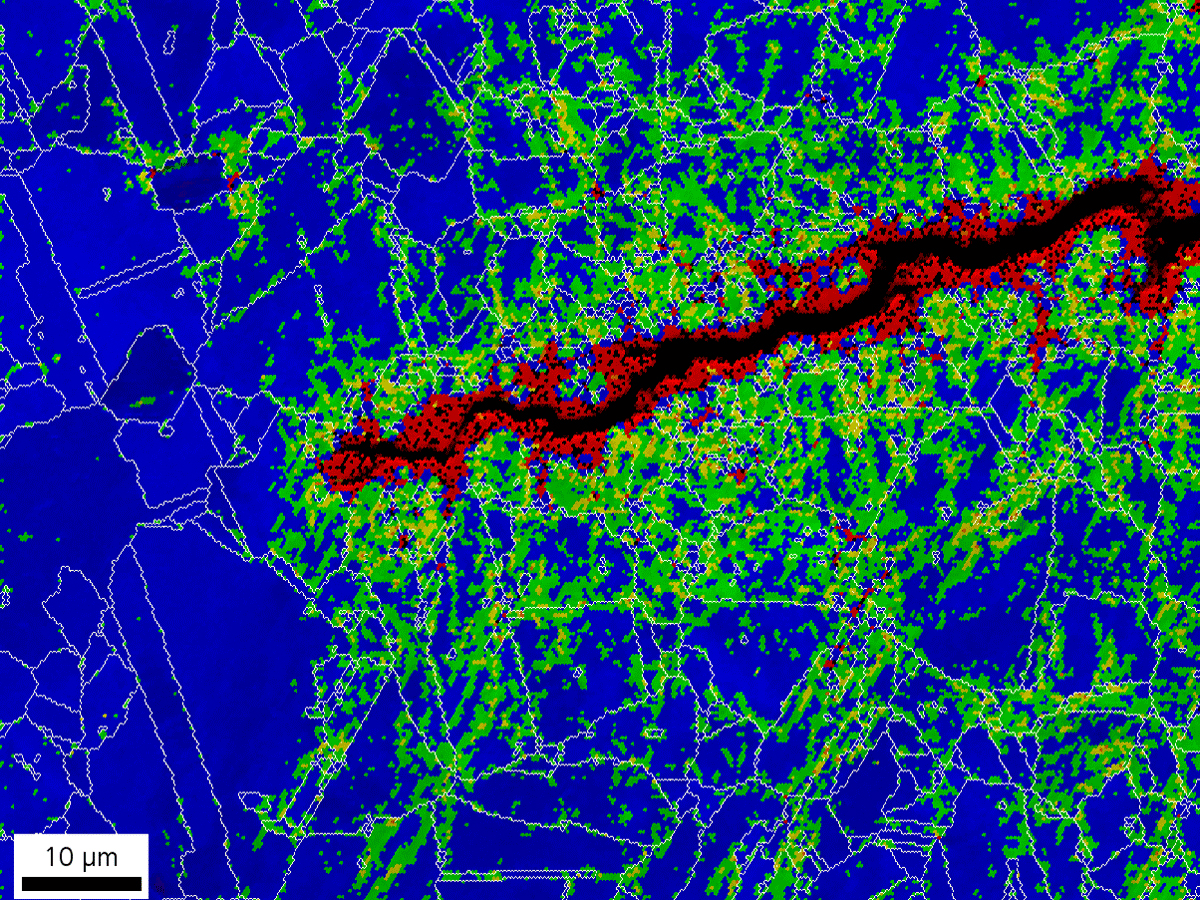Components in combustion engines, thermal power stations and plants and stationary gas and aircraft turbines under thermomechanical fatigue load are usually exposed to larger plastic deformations, at least locally, as a result of which crack formation of a microstructurally short crack on and in microstructure features (e.g. precipitations, grains, phase boundaries) and defects (e.g. production related pores, cavities and discontinuities) usually play a negligible part in the overall lifetime. Modeling activities have therefore focused for years on the propagation of small cracks of just a few micrometers up to the length of a technical crack (e.g. 0.5 to 1 mm) and on the long crack stage for consideration of remaining lifetime.
Development of models has the aim of applying material (class) specific damage mechanisms for thermomechanical fatigue and creep fatigue to practical models which can subsequently be used for lifetime assessment of components as part of finite element analyses.
 Fraunhofer Institute for Mechanics of Materials IWM
Fraunhofer Institute for Mechanics of Materials IWM